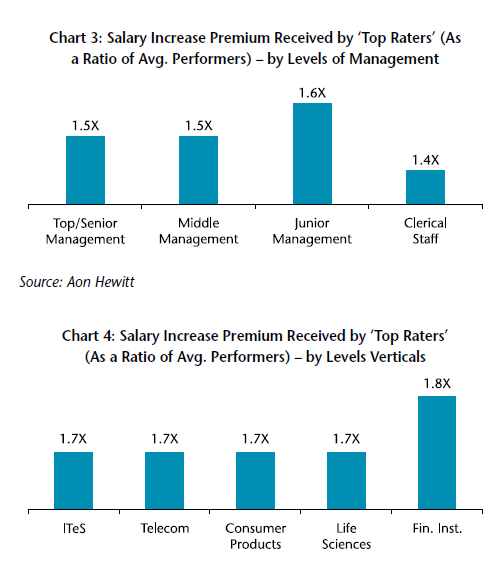India Inc. Prepares for a Long Innings

Key Talent Differentiation
While high performance is gaining more importance by each passing year, so has the concept of critical and key talent. High performers, high potential, key roles, roles difficult to replace all form a part of the key talent pool. Investment in key talent continues in 2015. Organizations continue to pay above the market as a key strategy for retention of key talent. The gap between salary increases awarded to key talent vs. others is widening year-on-year. Salary increase differential of key talent is 1.4 times in 2015 vs. 1.2 times in 2012.

The Pay at Risk
With the growing maturity of an economy, the acceptance of pay at risk increases. India Inc. has at large moved to a pay at risk concept. Across industries, organizations are offering various forms of pay at risk annual variable pay, sales incentives or long-term incentives. The survey revealed that in 2014, 86% of the organizations reported making a bonus payout. In fact, approximately 11% organizations speak of transferring salary increases from fixed pay to variable pay. There is a steady trend towards greater performancebased pay and it indicates a shift in overall pay philosophy across Indian companies. Almost 15% of total compensation is formed through pay at risk. At the top and senior management, a quarter of the total compensation comes through this. This number is close to 12% at the junior management level.Long-Term Incentives (LTIs) are increasingly becoming popular. Specifically in the technology sector, the rising number of e-Commerce firms and start-ups with niche solutions and technologies are relying on LTI to incentivize as well as retain employees and grow with the firm. Financial institutions, hi-tech and FMCG firms are the leaders in payouts through long-term incentives.

Attrition: Perception-led Paradox
In spite of market euphoria around business performance and the resultant demand for talent shooting up, attrition is at a controlled 18.1%. In fact, this is marginally lower than the 2013 numbers which was 18.5%. External inequity of compensation (57%), limited growth opportunities (55%) and higher education (48%) continue to be the key reasons for voluntary attrition.
|